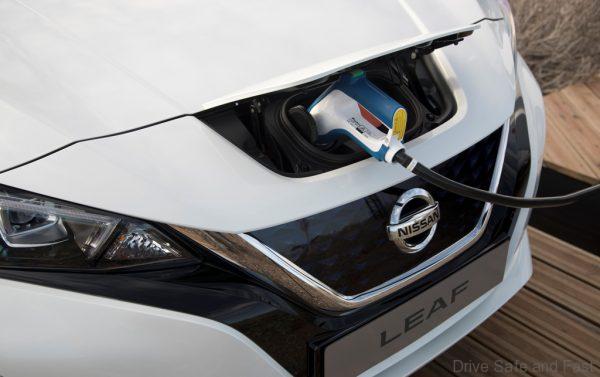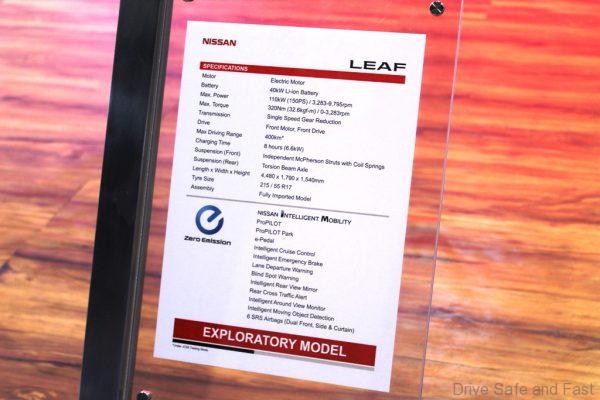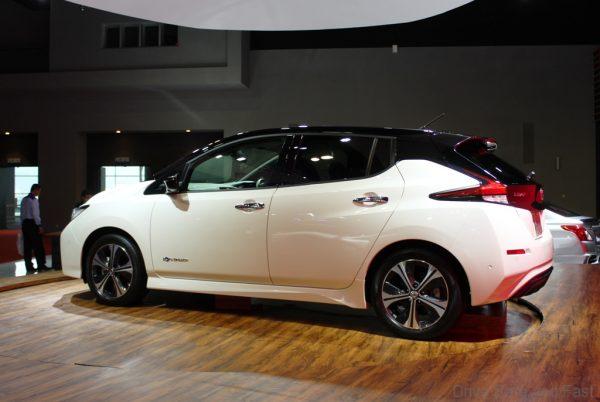Tan Chong Tackles Top EV Myths with All-New Nissan LEAF
The all-new Nissan LEAF will be launched in Malaysia next week and as preparation for its arrival, local official distributor Edaran Tan Chong Motor (ETCM) is addressing the most common questions and myths surrounding electric vehicles (EV).

Charging an EV
There are 3 main charging options for EVs; the Standard Outlet Charging (requires more than 13 hours charging time), Wall Box Charger (faster than the standard socket charging), and the CHAdeMO Quick Chargers.
The new LEAF comes with a 6.6kW Wall Box Charger that takes approximately 7 hours to fully charge the vehicle. For a faster charging mode, 50kW quick charger CHAdeMO is able to fully charge up the LEAF in 60 minutes. This will be available free-of-charge at ABB in Subang, Nichicon in Bangi and Ayer Keroh Rest Area (southbound).
Additionally, EV chargers are weatherproof and are specifically designed to protect both the vehicle and humans from electrical shock. This means that charging the LEAF can be safely performed even in the rain.

EV Range
Most drivers in Southeast Asia travel less than 80km a day, and this driving distance can be easily achieved by just a single charge in most EVs today.
Thanks to its new 40kWh lithium-ion battery, the all-new LEAF is capable of reaching an average 311km on a full-charge based on the New European Driving Cycle (NEDC) test mode.
EV Driving Experience
With maximum power of 150PS and incredible instant torque of 320Nm, which is comparable to that of a 2.0-litre car, the LEAF is capable of achieving 0-100km/h in 7.9 seconds and a top speed in excess of 150km/h.
Additionally, the LEAF’s battery pack is placed in the centre of the body for a lower centre of gravity which then results in better road-hugging handling and stability at greater cornering speeds.
The LEAF is also equipped with the world’s first e-Pedal technology, allowing drivers to intuitively accelerate, slow down and stop using one pedal driving.

Without an internal combustion engine, the LEAF is significantly quieter compared to conventional vehicles providing driver and passengers the experience of gliding around in virtual silence.
As for safety, the LEAF is awarded with a five-star safety rating in JNCAP (Japan New Car Assessment Program). It comes with Safety Shield technologies that include features such as:
- Intelligent Forward Collision Warning (FCW)
- Intelligent Forward Emergency Braking (FEB)
- Intelligent Around View Monitor (I-AVM) with Moving Object Detection (I-MOD)
- Intelligent Driver Alertness (I-DA)
- Intelligent Ride Control
- Intelligent Trace Control
- Hill Start Assist
- Anti-Lock Braking System (ABS) with Brake Assist (BA)
- Vehicle Dynamic Control
- Electronic Braking Distribution
- 6 Airbags

Owning an EV
By driving the LEAF with a 40kWh battery, it costs Malaysians only RM20.64 to fully charge it and the cost per kilometre is incredibly low at RM0.07. Maintenance and service costs are also considerably lower for EVs as the LEAF only requires service maintenance every 20,000km.
Many consumers believe that EVs have limited interior space. However, without a tailpipe engine, they have much larger space allowances as compared to regular vehicles. For example, the LEAF has 435 litres of boot space and accommodates up to five adults.
One of the key benefits of EVs is that the vehicle sends zero emissions into the atmosphere, making it environmentally friendly. Air pollution is the highest environmental consumer concern in Asia-Pacific, with 85% of people extremely or very concerned about this issue. Thus, electric vehicles present a viable solution for owners to help do their part for an improved urban future.














